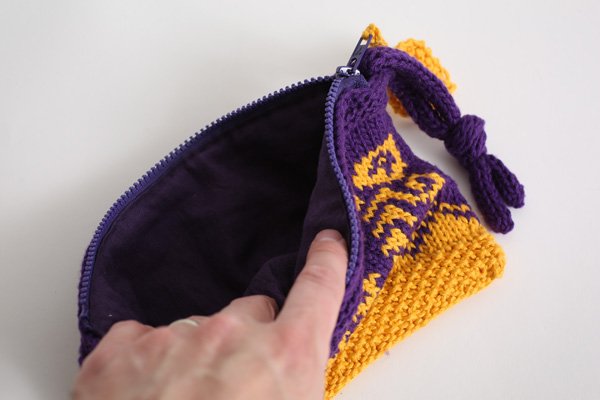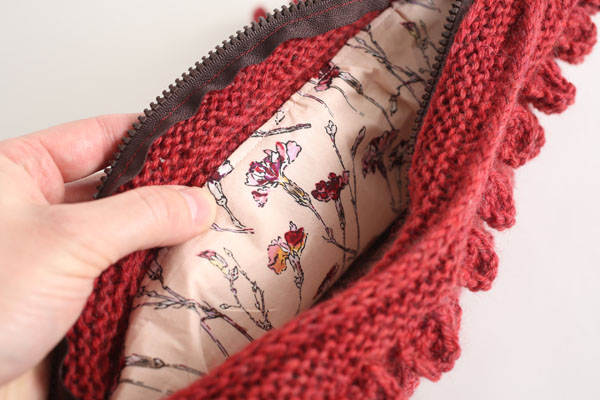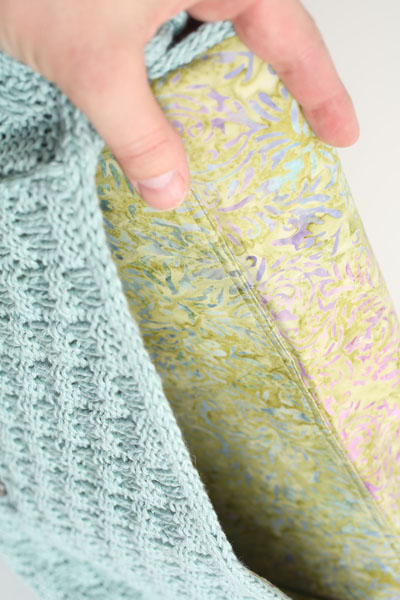Bags are quick and easy projects for knitters, but knitting them is only part of the job. The porous and flexible nature of knitted fabric means your bags need help holding their shape as well as your stuff. Finishing your knitted bags with the right lining will guarantee they will look and function in the
Bags are quick and easy projects for knitters, but knitting them is only part of the job. The porous and flexible nature of knitted fabric means your bags need help holding their shape as well as your stuff. Finishing your knitted bags with the right lining will guarantee they will look and function in the manner you intended. But before you construct a lining for your knitted bag, ask yourself a couple of key questions:
What will your bag contain?
Whether the bag will carry small light-weight items, large heavy items, or something in between, a fabric lining will prevent things from poking through the knitted fabric or falling through any spaces in the knitting. Select a matching lining fabric to blend in with your yarn colors, or choose a contrasting fabric to make a bold statement.
Does you bag need to hold its shape?
If you’ve designed your bag to stand on its own or hold heavy items like computers or tablets, then you’ll want a lining with two layers – fabric and interfacing/stabilizer. Interfacing can be found in your fabric store, and it comes in a variety of weights ranging from whisper thin to board stiff. When shopping for fabric and interfacing, take your knitted bag along with you to test different options.
Sewing a Lining in 4 steps
Step 1: Measure carefully, then make a paper template for your bag which including seam allowances. Step 2: Use the paper template to cut out lining fabric and interfacing, then fuse or sew them together. Step 3: Assemble and sew the pieces of the lining together and finish raw edges with zigzag stitch, serger, or pinking shears. Step 4: Attach the lining and hardware to your knitted bag. Consider using invisible or mono-filament thread for this part of the project. Generally speaking, machine sewing the lining will yield the best results, but you can sew by hand if necessary. But avoid “no-sew” adhesive seams if the bag will be used to carry heavy items.
A Low-Sew Alternative
Look for plastic canvas at your local craft or big box store. This inexpensive yet sturdy material can be cut to almost any shape. Use your paper template to cut out the plastic canvas to the right dimensions, then sew the pieces together by hand using a little yarn, a tapestry needle, and a simple whip stitch. Add a fabric lining to the inside of the bag if you want a more finished look.
Bags Without Linings
If all this sewing is too much for you, never fear! Some small bags don’t require linings if the knitted fabric is dense and stable. Use yarn worked on needles slightly smaller than recommended, and techniques like cable work and/or fair isle to produce strong fabric for bags. Felted bags are often sturdy enough to be used without linings. Finally, market bags are designed to stretch out to accommodate their contents, and as such rarely need to be lined.




